Wood-damaging insects are insects that ruin wood by digging through it to live, nest, or feed. If wood-damaging insects are not entirely treated on time, they can cause severe and expensive structural issues.
What are the most common wood-damaging insects? Carpenter ants, carpenter bees, termites, wood wasps, powderpost beetles, and other species of wood-boring beetles are the most common wood-damaging insects.
These insects can cause significant structural damage to your home. In this article, we will go through what these insects are, how to identify several types of wood-destroying insects, what damage they can do, and how to deal with an infestation.
What Are Wood-Damaging Insects?
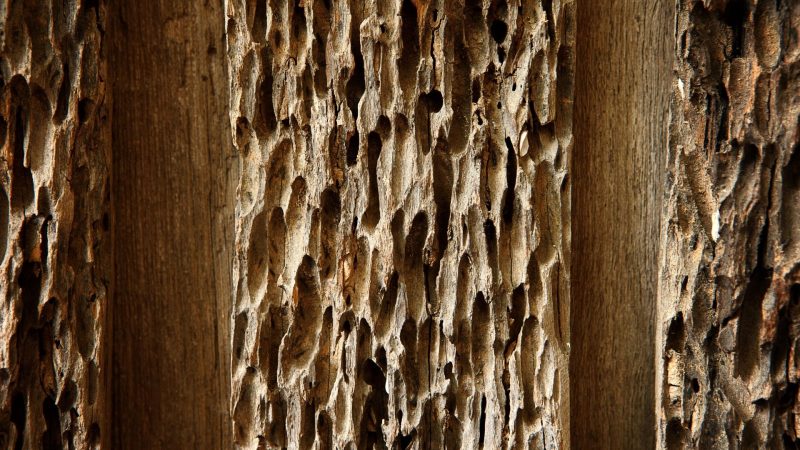
Wood-damaging insects burrow into wooden timbers, furniture, and other wooden constructions, feeding on them and laying their eggs within. These insects are a group of arthropods that inflict damage on wooden structures. They can destroy moisture-damaged, decaying, or sound wood whether it is old or new. Some of them consume the wood, while others damage it by digging into it to build nests. Insect damage might be indicated by small holes or sawdust on the wood’s surface.
Common Wood-Damaging Insects
Here are the common examples of wood-damaging insects:
Carpenter Bees
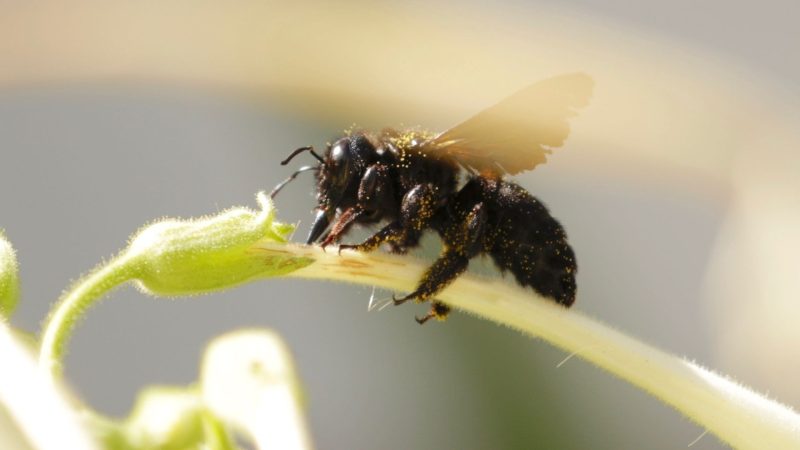
Carpenter bees don’t consume wood; instead, they dig through it to make nests. They are similar to bumblebees in appearance, but their abdomens lack yellow markings. Carpenter bee abdomens are smooth and glossy.
These insects use rotting wood as an access point into your home. They’re commonly seen in basements or on rotting wood around window sills or leaking pipes.
Related: Carpenter Bee Control: How To Get Rid of Carpenter Bees?
Carpenter Ants
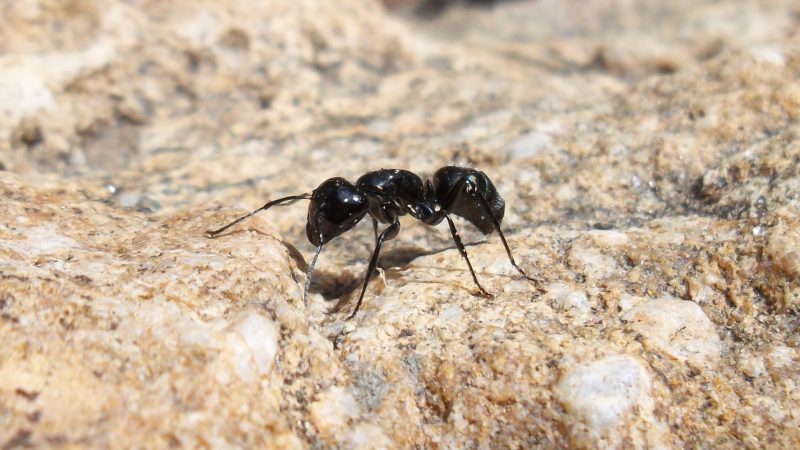
Carpenter ants appear in a range of sizes, from 1/2 to 5/8 inches in length. They can be a mixture of black and red or entirely black, red, or brown. This insect does not consume wood but instead burrows into it to make nests.
Same as the carpenter bees, they also use rotting wood as an entry point to your home. You can see them on basements, wooden materials around window sills, or leaking pipes. If you have piles of wood shavings, you may have a carpenter ant infestation.
Related: How to Get Rid of Carpenter Ants Without an Exterminator
Termites
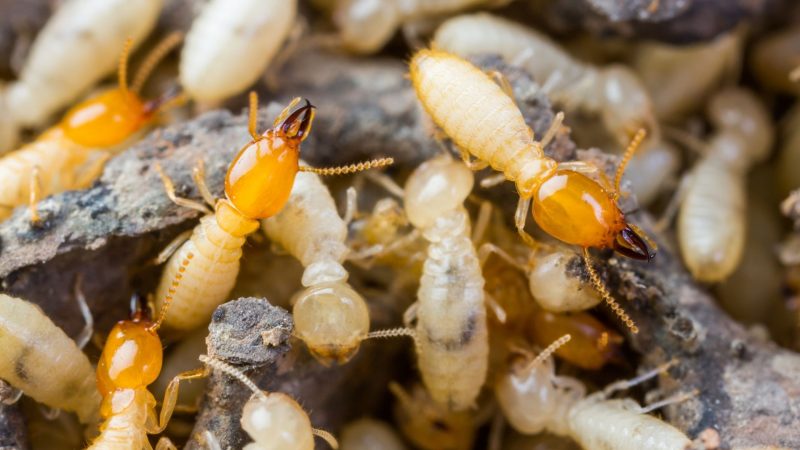
Termites consume wood as a source of nutrition. They usually emerge from the soil, mud tubes, or food sources they dig through. Examining exposed wood for hollow areas or probing for termites are some of the techniques to find out whether you have termites.
They are usually between 1/4 and 1/2 inches in length. And the colors range from white to light brown.
Related: How to Get Rid of Subterranean Termites? | Control and Prevention
Powderpost Beetles
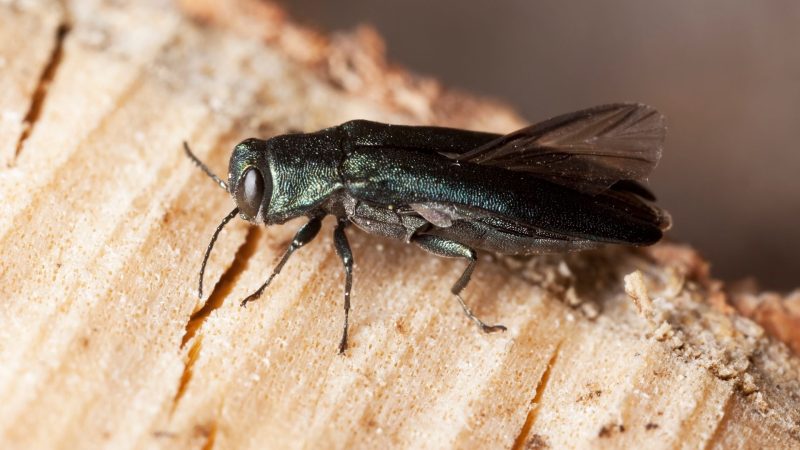
Powderpost beetles are known to cause damage to wood floors and furniture. They’re a common issue during the rehabilitation of older structures, such as barns. The fine, powdered sawdust they leave behind when they chew on wood is where they get their name. Powderpost beetles are small, usually less than 1/4 inch in length, and ranging in color from reddish-brown to black.
Related: Powderpost Beetle | Identification, Habitat, and Behavior
Wood Wasps
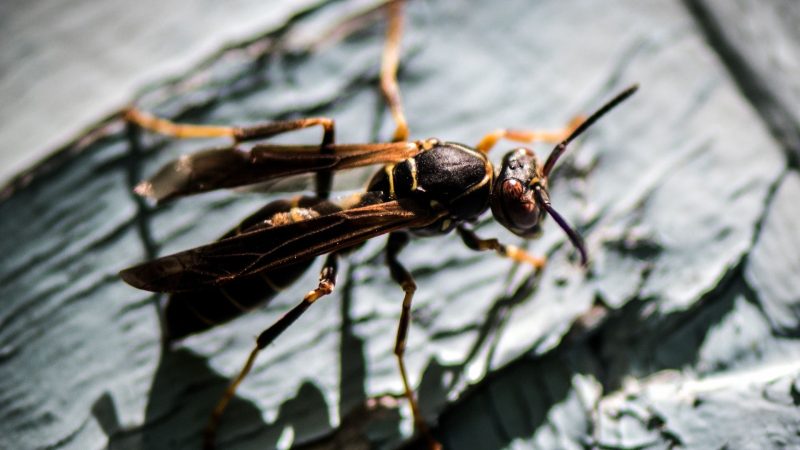
Wasps range in size from 20 to 40 mm in length. They infest pine plantations by hatching their eggs in damaged trees and spreading fungus that weakens the wood. Although they can not cause structural harm to your home, these pests can nevertheless get inside through the treated wood.
The damage produced by wood wasps is on the surface as a result of the escape holes they create in the wood.
Other Wood-Boring Beetles
Wood-boring beetles lay their eggs in weaker or recently damaged wood. Their larvae can weaken structural wood by burrowing through it. Flattened and elongated wood-boring beetles measure 1 – 7 mm in length. The hue ranges from reddish-brown to dark brown.
Why Do I Have a Wood-Damaging Insect Problem?
They obtain entry to dwellings through small cracks and crevices found in foundations, as well as gaps found around external walls, windows, and doors while hunting for food. Wood-destroying insects frequently enter homes through timbers, wooden furniture, barn wood, and other wooden things and infect with their eggs or larvae.
Where Will I Find Wood-Damaging Insects?
Insects that consume wood can be found in a variety of places, including wooden structures, fence rails, fallen trees, tree stumps, woodpiles, and beneath mulch. They infest structural wood, hardwood floors, barn wood, wooden furniture, window sills, and wooden trim after entering homes and other buildings.
They are also often found in spots of a home that are poorly ventilated and have a high degree of humidity, such as a subfloor crawl space.
Are Wood-Damaging Insects Dangerous?
Wood-damaging insects are not dangerous to humans. However, these insects can cause structural damages to your property. Wood-damaging insects burrow into wooden timbers, furniture, and other wooden structures, feeding on them and laying their eggs inside. The areas that they have invaded are eventually damaged and weakened by their presence.
How Do I Get Rid of Wood-Destroying Insects?
To get rid of wood-destroying insects, try to do the following:
Replacing the Infested Wood
The structure of wood that has been previously infected with wood-damaging insects may be affected as a result of the insect’s holes and tunnels. If just one or two pieces of wood are contaminated, it may be more cost-effective to replace the wood.
Boric Acid Spray
Boric acid is a popular treatment for wood-destructive insects. It can eliminate wood-destroying insects. A borax solution can be sprayed on the afflicted area or used to coat wood-infested areas. To prepare a solution, combine one teaspoon of borax with 250 ml hot water, then use as needed by transferring to a spray bottle.
Use Insecticides
Insecticides are the most simple approach to keep pests out of your woodshed. By spraying the pesticide on your woodshed, you will kill a variety of pests as well as prevent the growth of fungus or wood rot. Furthermore, the pesticide will keep termites and other pests away from the wood, keeping it in good condition.
Professional Treatment
If the wood-damaging infestation is too severe, or the wood-damaging insects have entered too deeply into the wood, consider hiring professional exterminators (link at the end for the article). Chemical treatments used at home only penetrate the wood’s surface layers and are useless if the infestation is severe. The price of this treatment is determined by the severity of the infestation.
How Do I Prevent Problems With Wood-Destroying Insects?
Consider doing a few easy, do-it-yourself tasks prevention to protect your home against wood-destroying insects. To protect your properties from wood-destroying insects, follow these guidelines:
- Keep your basements, attics, and crawl spaces dry and clean.
- Wooden objects on your property should be painted, stained, or otherwise treated.
- Inside your home, try to avoid using old barn wood.
- Protecting and keeping the wood structures surrounding your house dry.
How Can I Prevent Wood-Damaging Insects in the Future?
To avoid future infestations, there are numerous things you may do in and around your property, such as the following:
- Repair any foundation cracks or holes of your home, exterior walls, and locations where insects can enter from the outside.
- You should also repair leaking pipes, fixtures, and faucets.
- Water-damaged structural wood should be removed from your property.
- On a regular basis, check your property for signs of these wood-damaging insects.
Summary
Overall, these wood-damaging insects destroy wood by digging through it to live, nest, or feed. To get rid of them, replace all infested woods, apply a boric spray to cover the infected areas, use pesticides by spraying them on your woodshed, and seek expert help if the infestation is severe.
List of Sources
Management of Wood-destroying Pests: A Guide for Commercial Applicators Category 7B. Michigan State University.
Wood Destroying Pest Management: Study Guide for Pesticide Application and Safety Category 15. Utah Department of Agriculture and Food.
Potter, M. (2018). Powderpost Beetles. University of Kentucky.
- How to Get Rid of Turtles | Proven Long-Term Solutions! - August 26, 2023
- How to Get Rid of Kingsnakes | Easy & Humane! - August 26, 2023
- How to Get Rid of Northern Water Snakes | Best Solutions and Preventative Measures! - August 19, 2023
